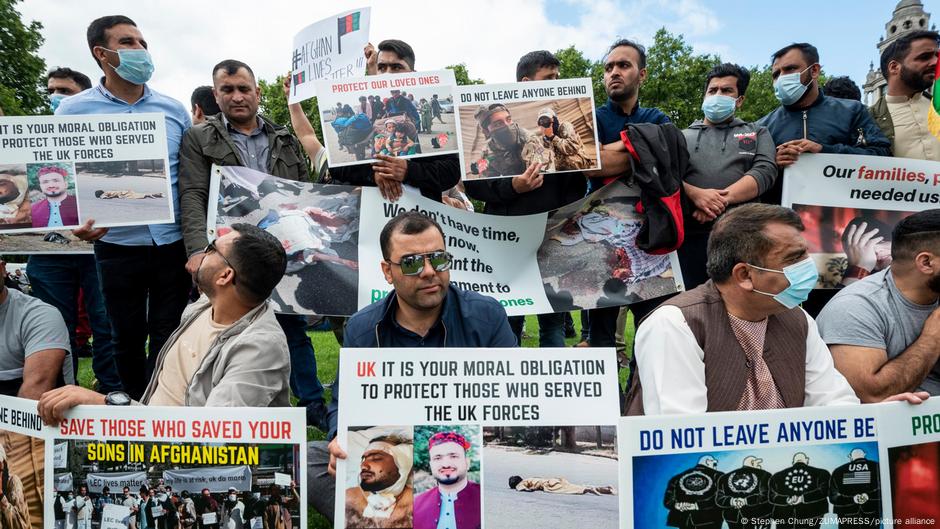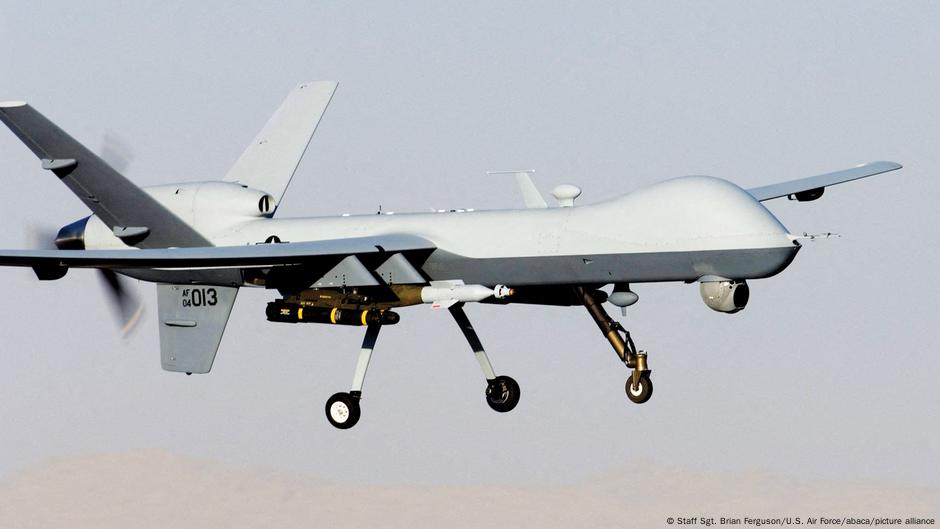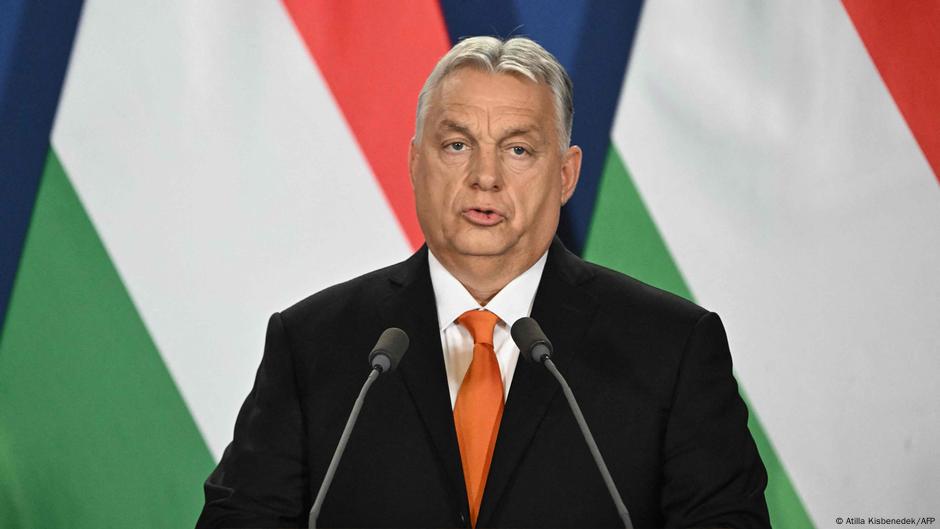Sursa: DW
Category: International
-

Accidentul Air India: Avionul Boeing în centrul atenției
Individual airlines in Japan and Singapore started their own checks as a precaution, according to Reuters.
Air India plane crashes in Ahmedabad with hundreds dead
To view this video please enable JavaScript, and consider upgrading to a web browser that supports HTML5 video
The London-bound Boeing jet collided with a structure just minutes after takeoff. The crash killed 19 people on the ground and all but one of the 242 people onboard the aircraft.
Pilots discussed fuel intake
Indian officials are still trying to determine the cause of the tragedy, the deadliest aviation accident in a decade. However, the nation’s Aircraft Accident Investigation Bureau (AAIB) published a preliminary report this week, claiming that the fuel switches for both of the plane’s engines moved to the “cutoff” position almost immediately after takeoff, starving the engines of fuel.
British national Vishwash Kumar Ramesh is the only passenger who survived the Air India crash in JuneImage: Javed Dar/IANS/Handout/Xinhua/picture alliance
It is not yet known if this was done by one of the pilots or due to a mechanical fault. While the 15-page report does not provide a full transcript of the pilots’ conversation, the authorities shared a snippet indicating confusion in the cockpit.
“In the cockpit voice recording, one of the pilots is heard asking the other why did he cutoff. The other pilot responded that he did not do so,” AIIB officials said.
The report also notes that fuel switches moved to “run” seconds later. One of the engines apparently started cycling toward recovery, while the other continued to struggle. This was not enough to maintain flight and the plane crashed after less than a minute in the air.
‘Cloud of mystery’ surrounds Air India crash
Commenting on the preliminary report, aviation expert Sanjay Lazar who has worked with Air India for 37 years, said that the document “raises more questions” than it answers.
More questions than answers: Report on Air India 171 crash
To view this video please enable JavaScript, and consider upgrading to a web browser that supports HTML5 video
He also said it was “regrettable” that the full cockpit transcript has not been made public.
The AAIB-provided notes on the pilots’ conversation indicate that “either none of them cut it off and it got cut off some other way, or… there was some element of subterfuge. So it adds a cloud of mystery over that,” he told DW.
With the focus of the probe moving onto Boeing’s fuel intake controls, Lazar pointed to two directives issued by the US Federal Aviation Administration (FAA) possibly relating to the issue.
In the first, non-mandatory directive in 2018, FAA warned that these fuel switches could have a fault and advising supervisory bodies to check them. The second one in 2022, however, was mandatory — and it focused on engine fire control panel and engine fire control switches.
According to Lazar, the FAA said checks were necessary due to reports that foreign object debris “may have been introduced during maintenance or rework” of certain units, with one of the risks associated with it being an “uncommanded activation of the engine fuel shutoff.”
Air India admitted not following up on the first, non-mandatory directive. It was not immediately clear if the airline took action on the 2022 order.
Air India also said its maintenance records for the crashed jet showed that the throttle control module, which includes the fuel switches, was replaced in 2023. However, “the reason for the replacement was not linked to the fuel control switch,” the AAIB said in their preliminary report.
In recent days, news agencies reported that Boeing was assured airlines its fuel switch locks were safe.
Air India CEO says no issue with fuel quality
According to media reports, Air India CEO Campbell Wilson issued an internal memo on Monday acknowledging that the preliminary AAIB report “provided both greater clarity and opened additional questions.”
“I urge everyone to avoid drawing premature conclusions, as the investigation is far from over,” he said.
Loved ones of Air India crash victims wait for answers
To view this video please enable JavaScript, and consider upgrading to a web browser that supports HTML5 video
Wilson also said all mandatory maintenance and checks were completed on the Boeing aircraft.
Vezi toate știrile de pe accidentul india avionul
“There was no issue with the quality of fuel and no abnormality with the take-off roll. The pilots had passed their mandatory pre-flight breathalyser and there were no observations pertaining to their medical status,” he said in the note.
Pilot group wants seat at table
On Tuesday, Singapore Airlines said it had completed the inspection of its 787 fleet, including planes used by its low-cost subsidiary Scoot, and confirmed all were functioning properly. Germany’s Lufthansa group also said it rechecked fuel switches on its own 787s in the wake of the Air India crash, and found no faults.
Indian officials are due to submit their findings regarding fuel switches by next Monday. The final report on the crash, however, is likely to take a year or longer.
A single passenger survives Air India plane crash
To view this video please enable JavaScript, and consider upgrading to a web browser that supports HTML5 video
Meanwhile, the Airline Pilots’ Association of India (ALPA India) requested to be included as observers to provide “the requisite transparency” in the official probe.
“We feel that the investigation is being driven in a direction presuming the guilt of pilots and we strongly object to this line of thought,” ALPA India president Sam Thomas said in a statement issued over the weekend.
Boeing’s PR nightmare continues
Whatever the outcome of India’s and other probes, the latest Boeing crash is likely to further degrade the already shaky reputation of the US airspace giant.
Boeing has been struggling to recover from two fatal crashes in 2018 and 2019, both of them involving 737 Max jets. While multiple factors contributed to both tragedies, both were linked to the plane’s Manoeuvring Characteristics Augmentation System (MCAS), which is designed to automatically push the plane’s nose down if it detects a danger of stalling.
Between the 2019 crash and the latest incident in India, Boeing aircraft were involved in a series of smaller midair emergencies, such as a door ripping off of an Alaska Airlines 737 Max-9 in January 2024, or a 787 suddenly dropping during flight and leaving some 50 people injured in March 2024. Some two months later, one person died when a Boeing 777 hit turbulence while flying from London to Singapore.
Boeing: Turbulent times for US planemaker
To view this video please enable JavaScript, and consider upgrading to a web browser that supports HTML5 video
Multiple whistleblowers have also publicly raised concerns about production issues and alleged safety gaps in Boeing’s production process, though achieving clarity on the complaints has proven to be difficult.
In March 2024, a Boeing former employee who had recently been giving evidence against the company in a whistleblower suit died of what police later said was a self-inflicted gunshot wound. Weeks later, another whistleblower passed away after a short illness, after coming down with a fast-spreading infection and developing pneumonia.
Edited by: Srinivas Mazumdaru
Darko Janjevic Multimedia editor and reporter focusing on Eastern EuropeSend us your feedback
Sursa: DW
-
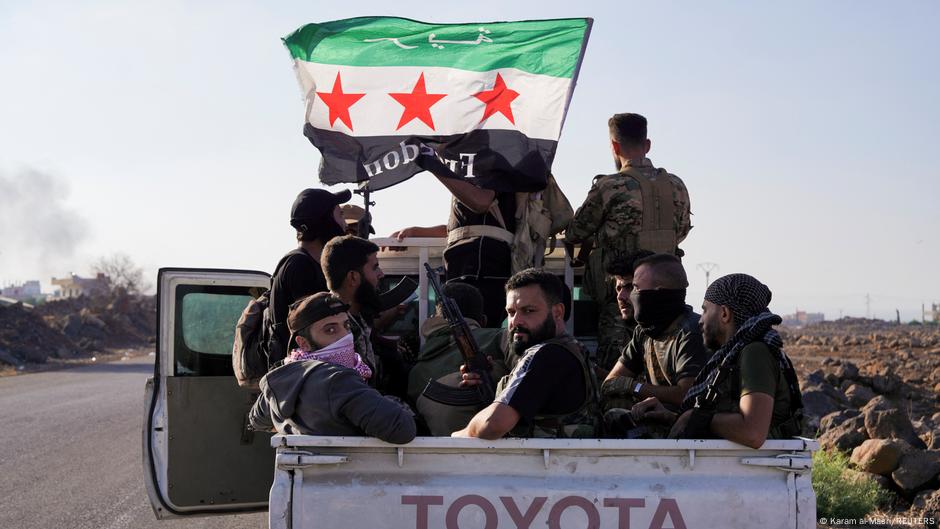
Orientul Mijlociu: Armata siriană declară armistițiu în Sweida
Shortly after government forces entered the city, Syria’s defense minister announced a ceasefire.
Meanwhile, in response to the government’s intervention, Israel launched military strikes on southern Syria, saying it was a move to protect the Druze community.
Below, you’ll find a roundup of the latest developments about Israel, the war in Gaza, and the wider Middle East on Tuesday, July 15:
Skip next section Recent Syria clashes ‘worrisome,’ says US envoy07/15/2025July 15, 2025
Recent Syria clashes ‘worrisome,’ says US envoy
The United States is “actively involved with all constituencies in Syria” in an effort to reach calm and productive discussions, Washington’s special envoy for Syria, Tom Barrack, said on Tuesday.
“The recent skirmishes in Sweida are worrisome on all sides, and we are attempting to come to a peaceful, inclusive outcome for Druze, Bedouin tribes, the Syrian government and Israeli forces,” Barrack wrote in a statement on X.
He listed “misdirection, confusion and inefficient communication” as the greatest challenges to integrating each party’s interests.
“We are in direct, active and productive discussions with all sides to navigate toward calm and integration,” Barrack added.
https://p.dw.com/p/4xVvpSkip next section Syria holds Israel responsible for ‘aggression’ on its south07/15/2025July 15, 2025
Syria holds Israel responsible for ‘aggression’ on its south
Syria’s Foreign Ministry condemned on Tuesday what it described as Israeli “aggression” in Syria’s south, following Israeli strikes in the backdrop of sectarian clashes in the southern city of Sweida.
The ministry stressed it “holds the Israeli side fully responsible for this aggression and its consequences,” adding that it left a number of military and security personnel killed.
Damascus stressed “its commitment to protecting all of its citizens without exception, foremost amongst them our brethren from the Druze community.”
The clashes come amid growing concerns for Syrian minorities’ rights under the leadership of its Islamist interim government.
The Israeli strikes, which it justified as an attempt to protect the Druze community, come as Israel tries to broker a normalization deal with Damascus.
https://p.dw.com/p/4xVtESkip next section Netanyahu says Israel strikes Syria to protect Druze community07/15/2025July 15, 2025
Netanyahu says Israel strikes Syria to protect Druze community
Israeli Prime Minister Benjamin Netanyahu and Defense Minister Israel Katz said that Israel launched military strikes in southern Syria to protect the Druze community.
The Israeli military said it targeted Syrian military vehicles and access roads to disrupt a convoy. The strikes followed the deployment of Syrian government forces in Sweida, a city with a majority Druze population.
The government’s intervention was prompted by deadly clashes between Druze residents and Sunni Bedouins.
In a joint statement, Netanyahu and Katz stated that they took action to prevent the Syrian leadership from harming the Druze and to ensure the demilitarization of the area near Israel’s border.
The Druze are a religious minority found across the region. In Israel, they are often viewed as a loyal minority and frequently serve in the armed forces.
Syria: Sectarian violence between Bedouins, Druze
To view this video please enable JavaScript, and consider upgrading to a web browser that supports HTML5 video
https://p.dw.com/p/4xVINSkip next section Israeli strikes kill 12 people in east Lebanon07/15/2025July 15, 2025
Israeli strikes kill 12 people in east Lebanon
Lebanese state media reported that Israeli strikes on the Bekaa Valley in eastern Lebanon killed 12 people.
According to Lebanon’s National News Agency, “enemy warplanes launched raids on the Wadi Fara area in the northern Bekaa Valley, one of which targeted a camp for displaced Syrians.”
The agency reported “the deaths of 12 martyrs, including seven Syrians, and eight wounded.”
Meanwhile, the Israeli army said it had hit targets belonging to Hezbollah’s elite Radwan force in the area.
The targets included training facilities used to “plan and carry out terrorist attacks against Israeli troops and the State of Israel,” the military’s statement added.
Israeli Defense Minister Israel Katz said the latest strikes were “a clear message” to Iran-backed Hezbollah and the Lebanese government “which is responsible for upholding the agreement.”
Israel has repeatedly bombed Lebanon despite the November ceasefire intended to end more than a year of hostilities between Israel and Hezbollah.
https://p.dw.com/p/4xVVPSkip next section EU ministers discuss deal with Israel to increase aid to Gaza07/15/2025July 15, 2025
EU ministers discuss deal with Israel to increase aid to Gaza
Foreign ministers from the EU’s 27 member nations are meeting in Brussels following a new deal with Israel to deliver humanitarian aid to Gaza.
On Monday, Israeli Foreign Minister Gideon Saar met with EU leaders after agreeing to allow food and fuel into the besieged coastal enclave.
Urmărește cele mai importante știri
The details of the agreement are still unclear, but EU officials have rejected cooperating with the Israel-backed Gaza Humanitarian Fund due to ethical and safety concerns.
The priority is opening more border crossings and allowing more aid trucks into Gaza, but officials say they eventually want to set up a monitoring station at the Kerem Shalom crossing.
According to Kaja Kallas, the bloc’s foreign policy chief, the European Union is seeking updates from Israel on the implementation of the new deal.
Meanwhile, Kallas proposed ten potential steps after Israel was found to have violated a cooperation agreement between Israel and the EU due to human rights violations.
The measures range from suspending the entire agreement to curbing trade ties, sanctioning Israeli ministers, imposing an arms embargo and halting visa-free travel.
Despite growing anger over the devastation in Gaza, EU states remain divided on how to address Israel, and diplomats say there is not enough support for any action.
EU ministers discuss measures against Israel for Gaza war
To view this video please enable JavaScript, and consider upgrading to a web browser that supports HTML5 video
https://p.dw.com/p/4xVPKSkip next section Syrian military declares ceasefire in Sweida07/15/2025July 15, 2025
Syrian military declares ceasefire in Sweida
Syria’s Defense Minister Murhaf Abu Qasra announced a ceasefire shortly after government forces entered the predominantly Druze city of Sweida.
In a statement, he said that after an agreement with the city’s “notables and dignitaries, we will respond only to the sources of fire and deal with any targeting by outlaw groups.”
The government intervened due to deadly clashes between Druze and Sunni Bedouin residents.
The latest sectarian violence in Syria began with tit-for-tat abductions and attacks between members of local Sunni Bedouin tribes and Druze armed groups.
On Monday, Syrian government security forces, sent to restore order, clashed with Druze armed groups.
According to the UK-based Syrian Observatory for Human Rights, more than 100 people have been killed in the fighting since Sunday.
https://p.dw.com/p/4xVS7Skip next section Welcome to our coverage07/15/2025July 15, 2025
Welcome to our coverage
Dmytro Hubenko | Kieran Burke Editor
Welcome to DW’s coverage on the latest developments in the Middle East.
We begin with the escalation in southern Syria where — following clashes between Druze and Sunni Bedouin groups — Syrian government troops entered Sweida, a predominantly Druze city. This prompted Israeli airstrikes.
Meanwhile, foreign ministers from the EU’s 27 member nations are meeting in Brussels to discuss a deal with Israel that would increase aid to Gaza.
Stay with us for more news and analysis.
https://p.dw.com/p/4xVFfDmytro Hubenko Dmytro covers stories in DW’s newsroom from around the world with a particular focus on Ukraine.Send us your feedback
Sursa: DW
-
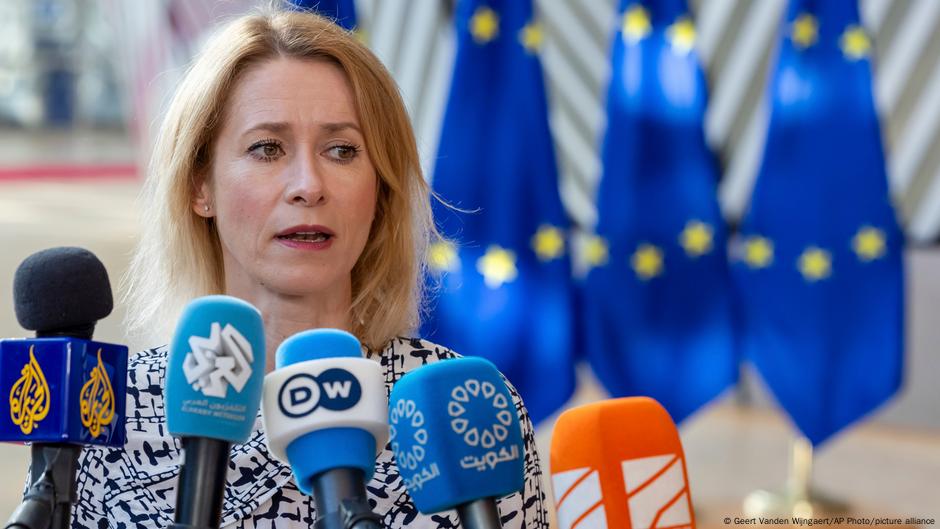
UE susține schimbarea de direcție a lui Trump față de Ucraina, dar dorește ca SUA „să împartă povara”
“We see from the United States that they have also realized that Russia does not really want peace,” Kaja Kallas told reporters in Brussels on Tuesday.
The former Estonian prime minister made a name for herself as one of Ukraine’s staunchest political backers, and warned at this week’s EU talks that Russia’s bombing campaign had “reached record levels.”
Kallas and many of her EU counterparts welcomed Washington’s shift in rhetoric as they filed into a meeting. “What we experienced yesterday with the new messages from Trump was very, very important,” Denmark’s Lars Lokke Rasmussen said.
But some of the EU’s top brass also had notes for the US on its latest announcements, including Washington’s threat to slap 100% secondary tariffs on Russia and countries that trade with it unless a peace deal with Ukraine is reached by early September.
“The 50 days that Mr. Trump has announced is rather long,” Dutch foreign minister Caspar Veldkamp said on the sidelines of Tuesday’s talks.
Could US Patriot systems be a gamechanger for Ukraine?
To view this video please enable JavaScript, and consider upgrading to a web browser that supports HTML5 video
Weapons deal details still under discussion
Trump also made headlines Monday with an announcement that he’d be greenlighting sales of Patriot air defense systems and other arms to European countries to send on to Ukraine, just two weeks after Washington paused some arms shipments to Kyiv.
The new plan should speed up and expand deliveries of US arms which Ukraine says it needs as it faces increased Russian aerial attacks.
Some European countries have already been buying and sending US-made weapons to Kyiv, though the latest scheme could offer more certainty on the permissions needed to swiftly transfer the arms. A US commitment to sell replacements for American-made weapons sent to Ukraine could also encourage European states to ship more of their own military supplies.
NATO chief Mark Rutte said the deal would “work through NATO systems” and that European countries including Germany, Finland, Denmark, Sweden and the Netherlands were all interested in taking part.
But the US is yet to disclose more details of its new scheme and DW understands the technicalities of exactly how it will work are still being discussed.
The EU’s foreign affairs chief is seen as a staunch supporter of UkraineImage: Geert Vanden Wijngaert/AP Photo/picture alliance
EU says US should ‘share the burden’
Trump was, however, quick to cast the new deal as a lucrative business opportunity for the US, stressing Europe would foot the bill. And that seems to be raising some eyebrows among his counterparts across the Atlantic.
The EU’s Kallas told reporters after Tuesday’s meeting that she would like to see Europe and the US “share the burden” of arming Ukraine.
“If we pay for these weapons, it’s our support — so it’s European support — and we are doing as much as we can to help Ukraine. And therefore the call is that everybody would do the same,” she said.
“If you promise to give the weapons then say that somebody else is going to pay for it, it’s not really given by you, is it?” Kallas added.
Denmark’s Rasmussen made a similarly veiled allusion. “We are providing a lot of funding for Ukraine to buy whatever weapons and ammunition they need … But I mean, I would very much like to see all our partners actually also contributing if we want this war to stop,” he said.
While the US ranks as Ukraine’s single largest donor since its full-scale invasion by Russia, the European Union as a whole has spent roughly the same amount as Washington over the same period, according to data from the Kiel Institute cited by Radio Free Europe. The EU outspends the US when the cost of hosting and assisting Ukrainian refugees is factored in.
Presidents Trump and Zelenksyy had a bust-up in the Oval Office back in February, though ties have improved since thenImage: Mystyslav Chernov/AP/picture alliance
Turning point or just one U-Turn?
EU states may be breathing a sigh of relief after the US policy shift, but policy analyst Torrey Taussig says it’s too soon to judge whether Trump’s stance has changed for good.
“There has been a seesaw approach to this relationship throughout the last several months of this administration, and I wouldn’t be surprised if this relationship, the US-Ukrainian relationship, still has more turns that it can take,” the former US government official turned Atlantic Council fellow told DW.
Citește mai multe știri pe top10stiri.ro
“I’m very reluctant to call this a strategic shift in the US-Ukrainian relationship,” she added, though added that the two sides’ ties now seem far more “positive.”
Specter of war: Are Europeans really ready to rearm?
To view this video please enable JavaScript, and consider upgrading to a web browser that supports HTML5 video
Bye-bye to ‘Buy European’?
With European countries racing to boost their own defenses amid pressure from the US and a broader rethink of the EU’s geopolitical fragility, governments have been debating how much of a planned military spending splurge should go to US weapons.
Arms purchases, especially those involving large weapons systems, tend to lock the buyer into a years-long relationship with the seller, from production to delivery to future repairs.
Experts say ending Europe’s dependency on the American-made weapons, logistics and intelligence capacities it lacks could take at least a decade — and with US foreign policy proving unpredictable, that leaves some worried.
EU heavyweight France has pushed for more European-only purchases, frustrating some other states which argued this only serves to slow down the process of getting weapons into European and Ukrainian hands.
The latest US-led plan may be seen by some as a blow to France’s efforts, with the potential for more European money to flow toward US arms manufacturers.
Slovakia says it needs to keep importing Russisan gas for its own energy security, drawing criticism from some EU counterpartsImage: Robert Nemeti/Getty Images
EU fails to greenlight fresh round of Russia sanctions
As Europe nudges the US to do more to support Ukraine and punish Russia, the bloc’s own efforts are faltering. Kallas said she was “really sad” that ministers failed to adopt an 18th round of EU sanctions on Moscow on Tuesday due to a holdout by Slovakia.
The landlocked central European state has been protesting planned EU laws to ban all sales of Russian gas, and Prime Minister Roberto Fico said in an online post on Tuesday that Slovakia had asked the EU to postpone the vote on sanctions while his government mulled its response to an exchange with the EU’s executive aimed at ending the stalemate.
Kallas said she was “optimistic” an agreement could be struck among EU states in the coming days.
Teri Schultz contributed to this report.
Edited by: Jess Smee
Send us your feedback
Sursa: DW
